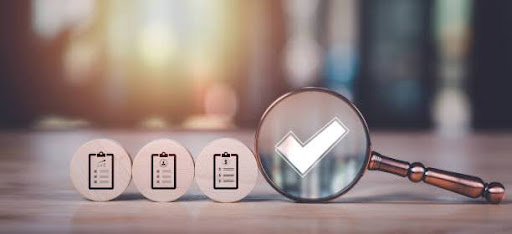
With the rapid shift toward digital transactions, businesses face a growing responsibility to ensure that their customers are both who they claim to be and old enough to access age-restricted products or services. This is where address verification and age verification play a vital role.
Together, these processes help companies remain compliant with regulations, prevent fraud, and protect vulnerable groups while delivering a seamless customer experience.
What is Address Verification?
Address verification is the process of confirming whether a customer’s provided residential or business address is valid and accurate. It ensures that individuals are not misrepresenting their location and helps organizations meet compliance requirements.
Common address verification methods:
- Document Verification: Checking utility bills, tax letters, or bank statements.
- Database Cross-Checks: Matching addresses against government or postal databases.
- Geolocation Matching: Using IP addresses or GPS to verify location.
- AI-Powered Validation: Detecting manipulated or fake address documents.
For businesses, address verification reduces fraud risks, prevents fake registrations, and supports AML (Anti-Money Laundering) compliance.
What is Age Verification?
Age verification ensures that individuals accessing products or services meet the legally required age limit. It is especially important for industries like:
- Gaming & Gambling
- E-commerce (alcohol, vaping, and adult products)
- Streaming & Online Media
- Financial Services (credit cards, loans, and fintech apps)
Common age verification methods:
- Identity Document Checks – Verifying DOB on government-issued IDs.
- Biometric Verification – AI confirming the user’s age through facial analysis.
- Database Lookup – Cross-checking age against official registries.
- Two-Step Verification – Combining ID validation with liveness detection.
By implementing strong age verification, businesses can prevent regulatory violations and safeguard minors from inappropriate or harmful content.
Why Combine Address Verification and Age Verification?
Address verification and age verification complement each other by creating a dual-layered defense for businesses.
- Age verification ensures the customer is legally eligible to use a product/service.
- Address verification ensures the customer resides at a valid and compliant location.
Example use cases:
- Online Gaming Platforms – Prevent underage players from signing up while blocking users from restricted regions.
- E-commerce Stores – Verify buyers of alcohol or tobacco are of legal age and deliver to a valid residential address.
- Fintech Platforms – Confirm both age and address to prevent identity fraud and ensure compliance with KYC/AML laws.
Benefits of Dual Verification
1. Enhanced Security
Fraudsters often use fake identities. Combining age and address verification makes impersonation far more difficult.
2. Legal & Regulatory Compliance
Industries dealing with age-restricted products or financial services must meet local and international regulations. Dual verification ensures full compliance.
3. Customer Trust
By protecting minors and preventing fraud, businesses strengthen customer confidence.
4. Global Reach
Companies can confidently expand into new markets while ensuring compliance with local laws on both age and residency.
5. Reduced Fraud Losses
Address + age verification minimizes chargebacks, fake orders, and regulatory fines.
Challenges and Solutions
1. Fake or Manipulated Documents
Fraudsters often alter IDs or utility bills.
Solution: Use AI-driven document authentication to detect tampering.
2. Friction in User Experience
Too many checks may frustrate customers.
Solution: Deploy fast, automated, mobile-friendly verification solutions.
3. Varying Global Regulations
Different countries enforce different age and address requirements.
Solution: Partner with providers offering localized compliance coverage.
4. Privacy Concerns
Storing sensitive age and address data can raise risks.
Solution: Ensure compliance with GDPR, CCPA, and data encryption standards.
Future Trends in Address & Age Verification
- Biometric Verification – Face and voice recognition for seamless verification.
- AI-Powered Fraud Detection – Identifying forged or stolen identity documents instantly.
- Blockchain-Based Digital Identity – Tamper-proof, reusable identities simplifying verification across industries.
- Regulatory Globalization – More countries standardizing requirements for age and address checks.
- Frictionless User Experience – One-click verification combining both age and address checks in real time.
Industry Applications
- Fintech & Banking – Confirming age for legal account ownership and verifying addresses for compliance.
- E-commerce – Age checks for alcohol/vape products and address verification for secure deliveries.
- Gaming & Gambling – Preventing underage players and blocking users from restricted geographies.
- Healthcare & Pharma – Ensuring patients are of legal age for treatments and delivering prescriptions to correct addresses.
- Telecom & Digital Services – Verifying SIM registrations and preventing misuse by underage customers.
Conclusion
As digital transactions and online interactions grow, address verification and age verification are essential for businesses seeking to balance compliance, fraud prevention, and customer experience.
- Address verification ensures the legitimacy of customer residency.
- Age verification ensures compliance with laws that protect minors.
When combined, they create a powerful shield against fraud, regulatory penalties, and reputational damage. For industries ranging from fintech and e-commerce to gaming and healthcare, dual verification is not just a compliance requirement—it’s a business necessity.
Please follow us on Vibe Linker.


